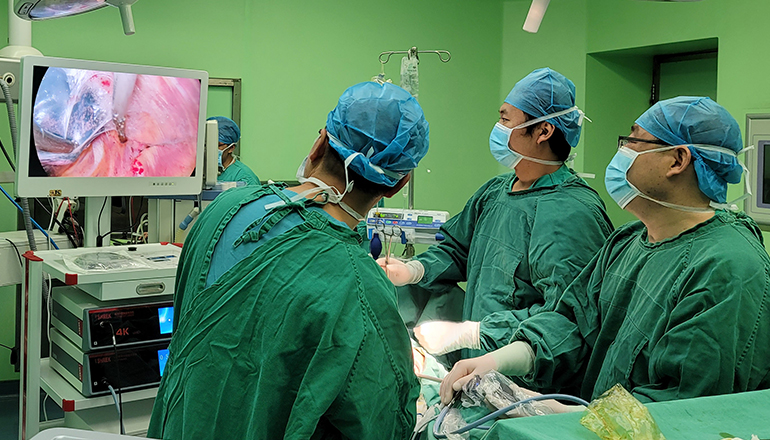- Shanghai, China
- [email protected]
- +86-21-58189111
Thoracoscopy, also known as video-assisted thoracic surgery (VATS), is a minimally invasive surgical technique used to diagnose and treat various conditions affecting the chest, including the lungs, pleura, and mediastinum. It involves the use of a small camera and specialized instruments inserted through small incisions in the chest wall.
During a thoracoscopy procedure, the patient is placed under general anesthesia and a small incision is made in the chest wall. A small camera, called a thoracoscope, is then inserted through the incision, allowing the surgeon to view the inside of the chest cavity on a monitor. Additional small incisions are made to insert specialized instruments to perform the necessary surgical procedures.
Thoracoscopy is commonly used to diagnose and treat lung and pleural conditions, such as lung nodules, pleural effusions, and pneumothorax. It can also be used to remove tumors or masses in the chest cavity, perform biopsies, or treat conditions such as emphysema or lung cancer.
One of the primary benefits of thoracoscopy is that it is minimally invasive, meaning that the incisions are much smaller than those used in traditional open surgery. This results in less pain and scarring, faster recovery times, and reduced risk of complications, such as infection or bleeding.

Another benefit of thoracoscopy is that it allows for more precise surgical procedures. The camera and specialized instruments provide a clear view of the surgical site, allowing the surgeon to target specific areas with greater accuracy. This can lead to better outcomes for patients, with less damage to surrounding tissues.
However, there are some risks associated with thoracoscopy, as with any surgical procedure. These can include infection, bleeding, and damage to surrounding tissues. It is important for patients to discuss the risks and benefits of thoracoscopy with their surgeon prior to the procedure.
Additionally, thoracoscopy can be performed on an outpatient basis, meaning that patients can often return home the same day as their procedure. This can be more convenient for patients and reduce healthcare costs.
Thoracoscopy is also a versatile technique that can be used for a wide range of procedures, including biopsy, drainage of fluid or air from the chest cavity, and removal of tumors or masses. This can allow for a more individualized approach to treatment, tailored to the specific needs of each patient.
In conclusion, thoracoscopy is a minimally invasive surgical technique used to diagnose and treat various chest conditions. It offers several benefits over traditional open surgery, including less pain and scarring, faster recovery times, and greater precision. While there are some risks associated with the procedure, it can be a valuable tool in the management of chest conditions.
Leave a Comments